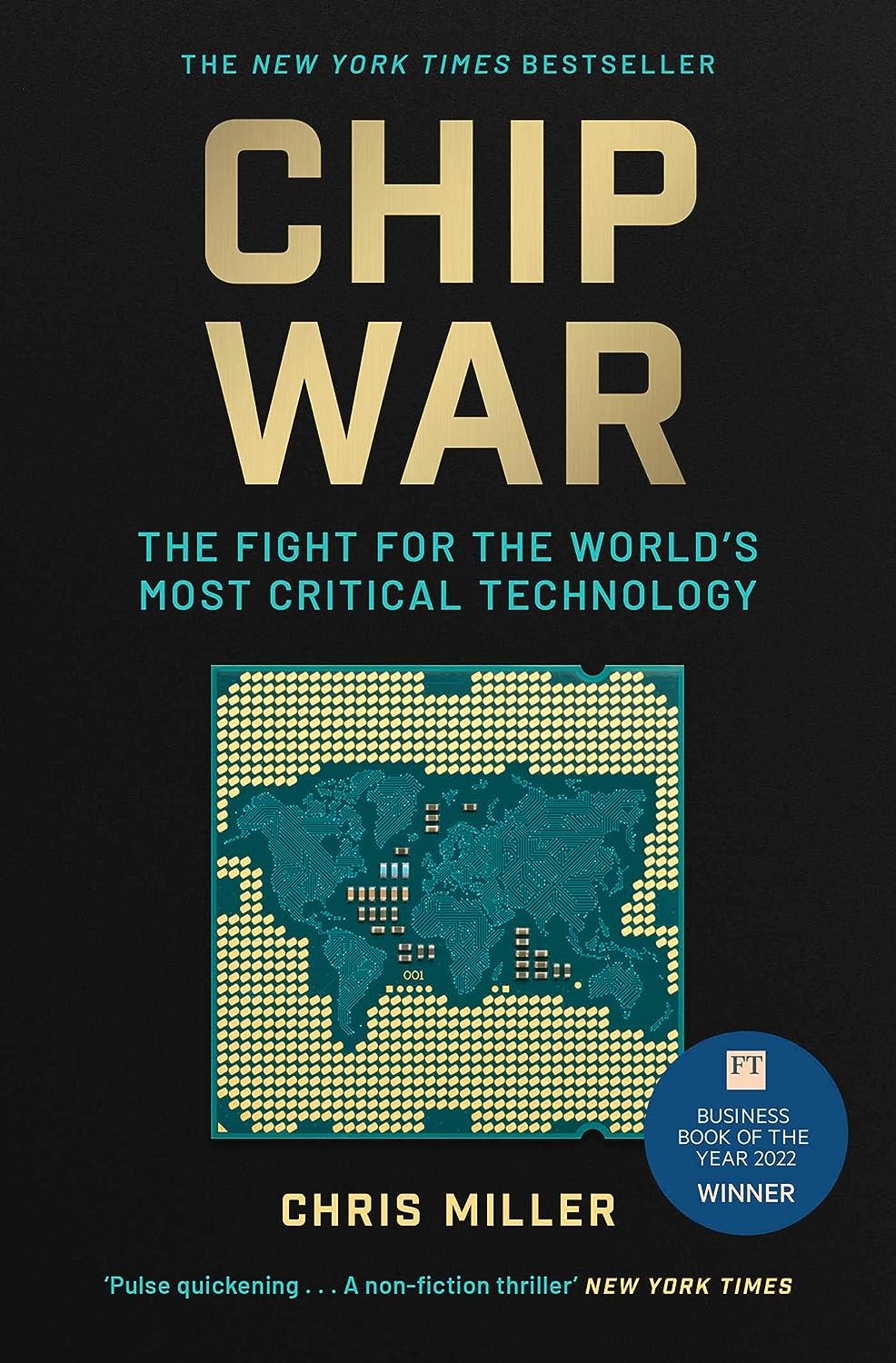Book Review: Chip War
Chip War: The Fight for the World’s Most Critical Technology by Chris Miller
What is a microchip? Why are they so important? Why is the United States pouring tax dollars into the industry? What exactly does the Taiwan Semiconductor Manufacturing Company Limited (TSMC) do? Why has NVidia become one of the most valuable companies in the last few years? If these questions interest you, Chris Miller’s latest book is a must-read.

Chris Miller traces the story of semiconductors and their impact on human civilization from its humble beginnings as an expensive transistor with few uses to the heart of every modern device from toasters to cars to precision munitions. He places this story in the geopolitics of the last 75 years as individuals, corporations, and countries raced to master this technology for fame, money, power, and world domination.
Modern chips represent the pinnacle of human achievement in multiple fields. The basic unit of a chip is a transistor. If we can pack more transistors in a given area, we can perform more functions with less power. Remember the USB flash drives from 10-15 years ago. They used to be almost as big as a thumb, with 1-2 GB capacity. The current ones are half or one-quarter of their sizes with an average capacity of 32-64 GB. This is because we have managed to reduce the size of transistors and pack them more tightly. The most advanced chips have three-dimensional semiconductors with features in the range of 10 nanometers, smaller than the coronavirus.
This level of manufacturing is possible only by staying at the cutting edge of multiple fields: physics, optics, engineering, supply chain, management, and politics. Pushing the frontier of our understanding of the behavior of materials at the atomic scale helps us imagine nanometer-scale semiconductors. Innovations in optics and engineering allow companies to create machines that etch such tiny designs on silicon wafers. The most advanced supply chain and management processes ensure that companies can specialize in every aspect of this process, thereby reducing costs. Politics ensures that the environment for research is vibrant, international sea lanes are open, and intellectual property rights are safe. Chris Miller weaves all these elements into the book in an easily readable manner.
He starts from the very basics and explains what a semiconductor and an Integrated Circuit (chips) are and how they were invented. The book’s description of the business challenges of setting up a viable business around semiconductors in Silicon Valley and how the different players overcame those challenges is a very interesting read and could be used in a management class as a case study.
As you flip the pages, the geopolitics replace these business concerns: How do you manage the competition for memory chips from Japan, is the reliance on TSMC for manufacturing chips a vulnerability, how do you balance the national security interests of the American State versus the vast business opportunities of the Chinese market?
The book consists of 8 chapters. But we can summarize the basic themes in the book in four points:
- The initial days of the industry in Silicon Valley in the 1940s and 50s
- The rise of Japan in the 1970s and Korea in the 1980s
- Specialization on steroids: Companies specialize to increase economic efficiency. The movement of manufacturing to East Asia to reduce costs, the rise of TSMC as a foundry for the world, and so on.
- The rise of China as a competitor to US hegemony
The first two themes play out in the shadow of the Cold War. However, the Soviet Union never meaningfully challenged the technological might of the US. Their cutting edge was always a full decade behind, and they never created a consumer market to sell their products.
The last two themes play out in the post-Cold War era. The first in the heady days of 1990-2010 when globalization seemed unstoppable and the second in the more cautious and conflict-driven contemporary period. China, with its industrial might, highly skilled population, and well-developed consumer market challenges the US dominance of the industry today in a way neither the Soviet Union nor Japan could ever do. Hence, we are truly in interesting times.
Summing up, it’s a great read on an important topic. It gives you a great lens to look at a contemporary technological and political issue. I found the story-telling focus on the personal traits of some of the characters in the initial parts of the book over-dramatized and boring. I don’t really care what car the CEO of AMD, Jerry Sanders drove. Leaving that minor point, it’s an important and timely read.